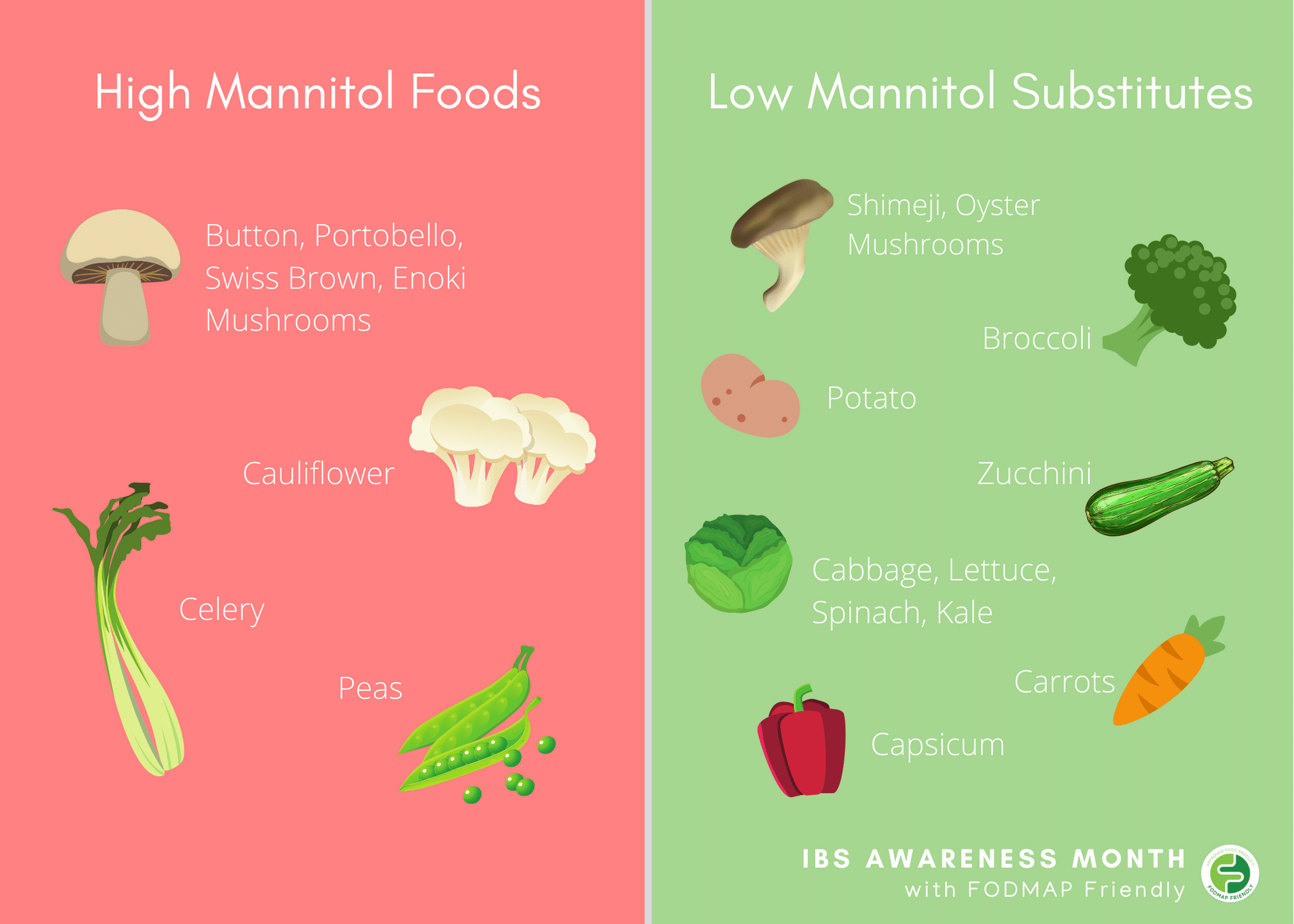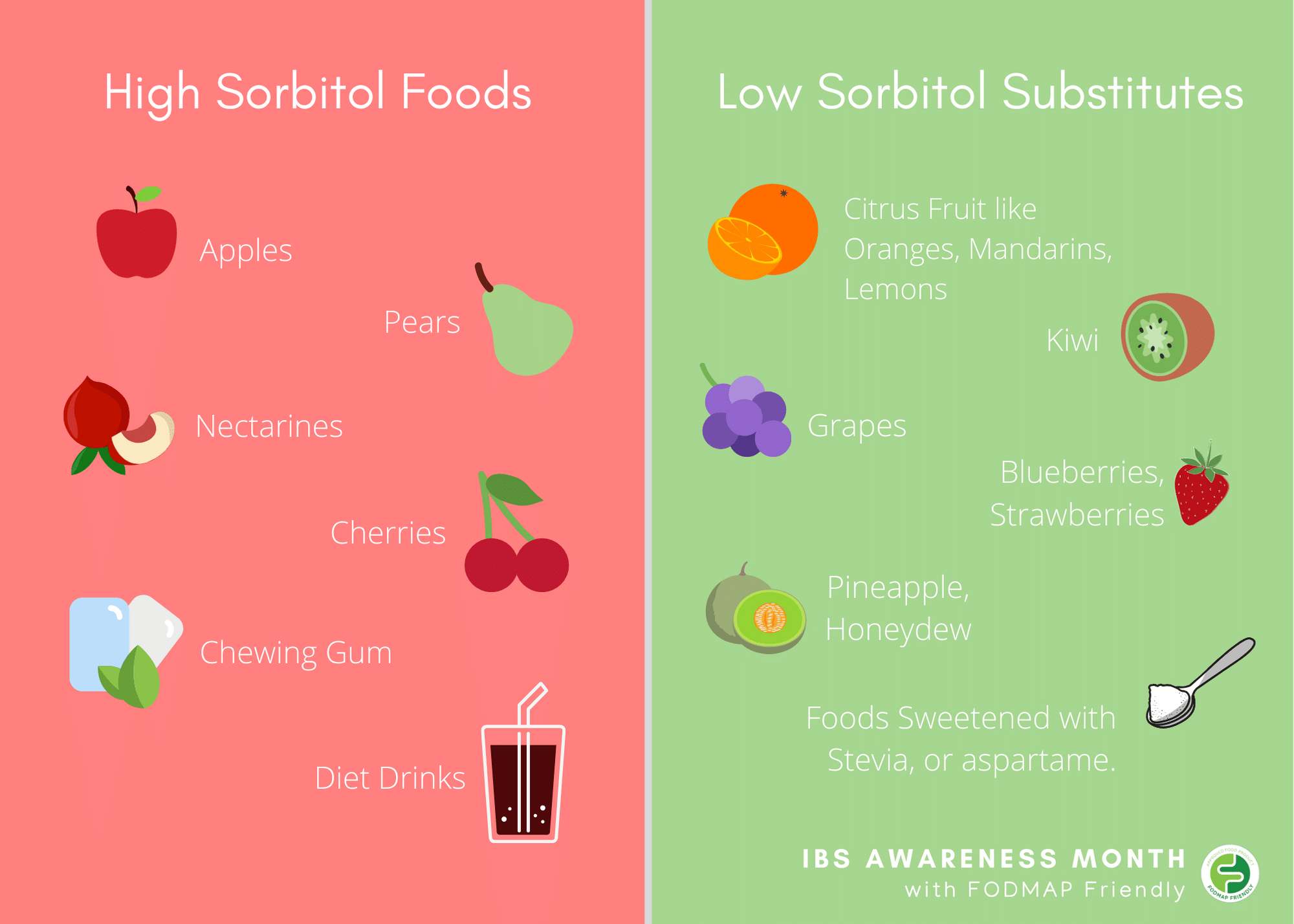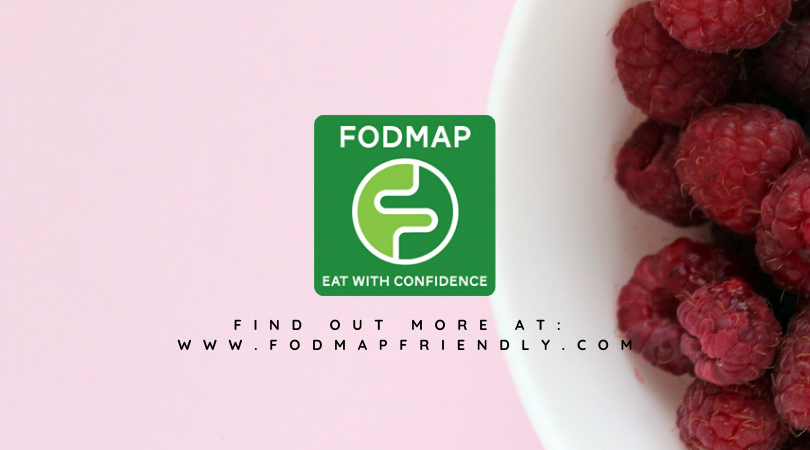Humans don’t absorb polyols – so should we avoid them?
Posted on April 23, 2020
This week we’re shifting our focus to the ‘P’ in FODMAPs – Polyols.
Polyols are found naturally in some fruits and vegetables, as well as added artificially to sweeten ‘sugar-free’ packaged food products. Humans can’t absorb polyols properly, so should we be avoiding them?
What are polyols?
Polyols, namely sorbitol and mannitol, are found across the food supply, as they can be both naturally and artificially occurring.
We find polyols in nature as sugar alcohols in a range of fruits and vegetables. They are not like the alcohol we drink but are structured similarly at a biochemical level. Since polyols have a low energy content, they are often used as artificial sweeteners in diet products, such as ‘sugar free’ chewing gum, mints and confectionery.

How do polyols behave in my gut?
To some degree, everyone malabsorbs polyols. Malabsorption is simply another word for partially (and not fully) absorbing a substance. When polyols reach the small intestine, they are either not digested or only partially digested.
Polyols attract water as they move through the bowel and can be fermented by intestinal bacteria, stimulating bowel movements and other gastrointestinal symptoms. The general population can tolerate a larger quantity of sugar alcohols at a time before experiencing the symptoms associated with this fermentation – excess gas and diarrhoea. However, people with IBS may only be able to tolerate a very small amount of sugar alcohols before experiencing symptoms.
“Excess consumption (of polyols) may cause a laxative effect”. What does this mean?
If you’ve ever picked up a ‘sugar-free’ product at the supermarket – such as chewing gum or chocolate, you’ll notice this warning statement. Since polyols are natural laxatives and draw water into the large intestine, they produce gas from the fermentation process and have a laxative effect when consumed in large amounts. Products that contain sugar alcohols are required to affix this warning to their products.
Remember – people without IBS can tolerate up to three times more polyols before experiencing gut distress, so it could take someone with IBS a lot less of a polyol-containing food to experience these same symptoms. This is why it’s so important for those with IBS to undergo the challenge phase of the low FODMAP diet with a FODMAP-specialised dietitian to establish what their individual threshold is. Even among people with IBS, some can be extremely sensitive to polyols and others can tolerate them just as well as the general population.

How do I know whether to avoid polyols or not?
We all malabsorb polyols – but deciding whether or not to avoid them comes down to your established tolerance level after completing the low FODMAP challenge phase with a dietitian. If you feel bloated, experience excessive wind and/or bowel irregularity after eating foods containing polyols, namely sorbitol and mannitol, ask your FODMAP specialist dietitian to see if you should be avoiding polyols.
Which polyols should I be looking out for?
Fermentable polyols include sorbitol, mannitol, maltitol, xylitol and isomalt. Erythritol is not a FODMAP – it is generally well absorbed by the small intestine. The two most common polyols found in foods that can trigger IBS symptoms are mannitol and sorbitol.
Which foods contain sorbitol?
Sorbitol is found naturally in a number of fruits – apples, apricots, blackberries, cherries, lychee, nectarines, pears, plums and prunes. It is also manufactured in a number of low calorie ‘diet’ food products. Sorbitol will either be listed on the ingredients panel as sorbitol, or under its food additive number – e420.
Which foods contain mannitol?
Mannitol is found naturally in a number of fruits and vegetables, including mushrooms, cauliflower, celery and peas. It is also used as a sweetener in a number of ‘sugar free’ products. It will either be listed on the ingredients panel as mannitol, or alternatively under its food additive number – e421.

What are low FODMAP substitutes for these foods?
Low FODMAP fruits include firm bananas, blueberries, strawberries, raspberries, kiwifruit and dragon fruit. As for low FODMAP vegetables, your best bets are capsicum, carrot, cucumber, eggplant and spinach. If you’re looking for FODMAP friendly sweetener in diet products, acesulphame K, stevia and aspartame are good options.
This is not an extensive list. If you are following a low FODMAP diet, use the FODMAP Friendly App to find out the particular FODMAPs present in your food.
In summary
Polyols are found naturally in a number of fruits and vegetables as well as being added to ‘sugar-free’ products as a sweetener. Sorbitol and mannitol naturally occur in a range of fruits and vegetables, but other polyols to look out for include maltitol, xylitol and isomalt. Should you avoid polyols? Regardless of whether or not you’re diagnosed with IBS, we all malabsorb polyols. However, you only need to consider avoidance once you’ve established that polyols are causing you gastrointestinal upset following the ‘challenge’ phase of your low-FODMAP diet.
Have you read last week’s blogpost about fructose? Click here to read How To Enjoy Fruit With Fructose Intolerance.










